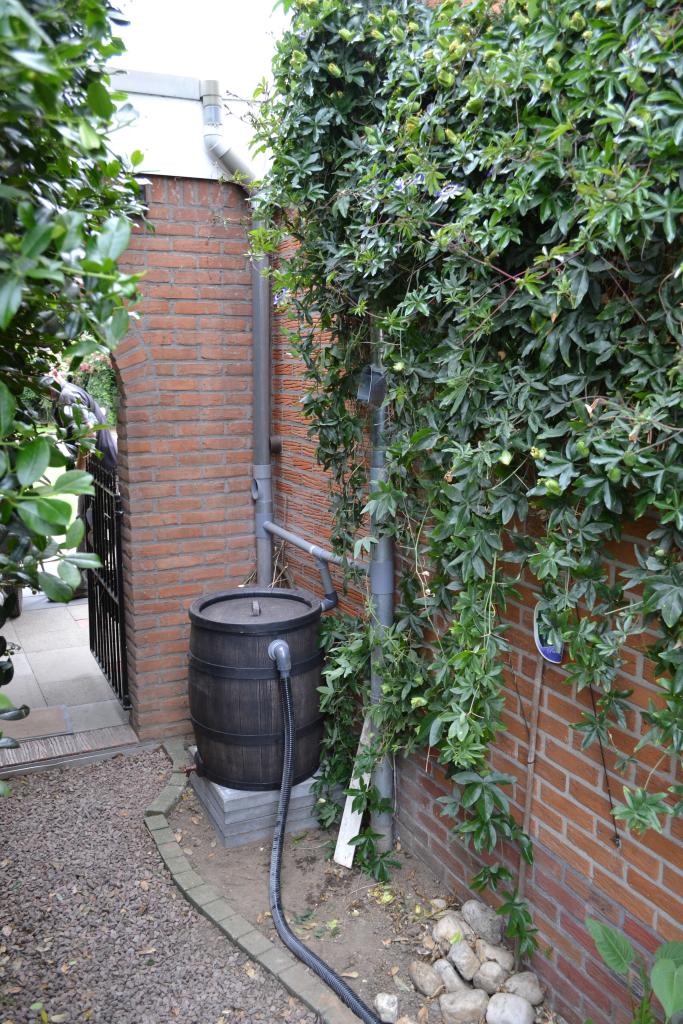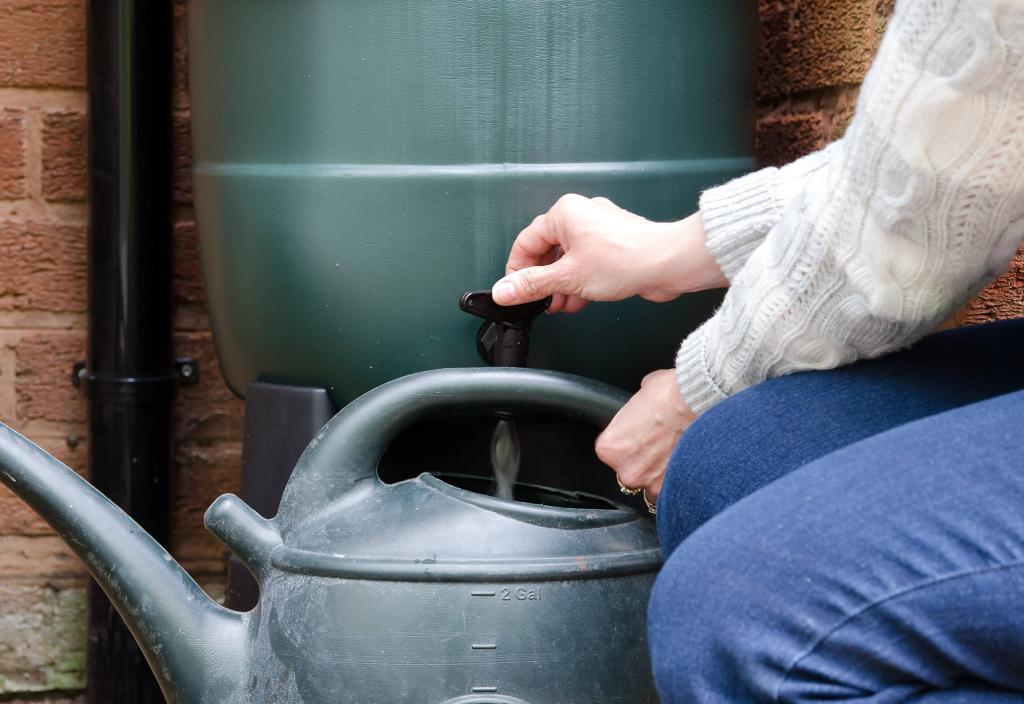Rain barrel
By installing a rain barrel, you collect extra water for watering the garden. The amount of water storage is limited. Additional measures are needed to make your garden water-ready.
Rain barrels come in all shapes and sizes. The capacity can range from 80 to as much as 800 liters. The barrels are available in many hardware stores, garden centers and over the Internet. You also have special rain barrels in the shape of a watering can, such as the Raindrop (with a capacity of 75 liters).
You only qualify for the disconnection subsidy if the overflow from the tank is connected to an infiltration facility in your own yard. An overflow is needed in case the tank is full.
Cost
The price depends on the type of rain barrel. There are hardly any costs for work.
Space use
The space needed for your rain barrel depends on its size.
Difficulty
You can easily install a rain barrel yourself, preferably in the shade.
Earthmoving
No earth moving is required, except when choosing to connect underground piping.
Maintenance
Keep leaf grate and leaf trap clean. Health at first frost that the rain barrel is empty.
Climate Goals
Awareness and water reuse
Biodiversity
Contribution to improving biodiversity
Points of interest
- The surface of the rain barrel should be flat and solid. This is because a full rain barrel is heavy.
- Preferably place the rain barrel in the shade to prevent algae growth.
- Attach a short piece of hose to the tap of the rain barrel so you can easily fill the watering can.
- Place the barrel on a base or base so that you can place a watering can under the tap.
- Use a leaf trap to prevent the rain barrel from filling up with debris.
- Health that the rain barrel is sealed at the top to prevent it from becoming a breeding ground for insects.
- Empty a wooden rain barrel at the first night frost to prevent the barrel from bursting due to expanding ice water.
- Health that a wooden rain barrel does not dry out to prevent leaks.
- Tip: connect the overflow from the rain barrel to an infiltration device in your garden instead of the sewer system.

